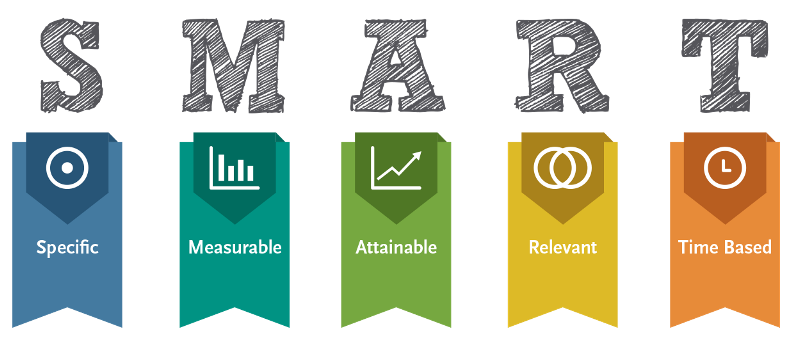Project Management with a Bit of Magic
Plan, manage, and deliver projects efficiently. Merlin Project for macOS and iOS

SMART goals effectively help you set goals that align with business initiatives. Our guide helps with their formulation.
Are you overwhelmed at the beginning of a project? Do you find it difficult to increase team productivity? The best way to master project challenges is to set the right objectives. SMART goals offer a reliable structure and clear orientation in your project. They clarify precisely what you want to achieve and help your team stay aligned with the overall business goals. This approach is perfect for smart project initiatives and can be used by managers and employees alike.
What Are SMART Goals?
The SMART Acronym
The Limits of SMART
The Easiest Way to Write SMART Goals
S.M.A.R.T. is an acronym that stands for Specific, Measurable, Achievable, Reasonable, and Time Bound. George T. Doran first introduced this concept in his 1981 article "There's a SMART Way to Write Management's Goals and Objectives". Since then, SMART goals have proven essential in project management, employee development, and other areas that require clear goal setting.
“A goal without a timeline is just a dream.”
– Adapted from Robert Herjavec
Goals formulated according to SMART are clear, measurable, and verifiable. They help keep your smart project on track by splitting objectives into long-term (strategic) targets and shorter or medium-term (tactical) targets.
Below is a quick overview of what each letter in the SMART structure stands for:
| Letter | Meaning | Description |
|---|---|---|
| S | Specific | Define goals clearly. Answer who, what, when, where, why, and what obstacles. |
| M | Measurable | Use metrics to determine success. Break large projects into milestones. |
| A | Achievable | Keep goals motivating and attainable. If the goal is big, split it into smaller steps. |
| R | Reasonable | Ensure goals align with overall business objectives. A goal that clashes with company direction is not realistic. |
| T | Time Bound | Set a fixed deadline. This generates urgency and clarity. Establish target dates and possible checkpoints (e.g., halfway to the final deadline). |
Formulate your goals as precisely as possible. Ask yourself the W questions (who, what, when, where, why, which). For example, define who needs to participate, what you aim to accomplish, and by when you want to get there.
Include clear milestones or metrics. If your smart project will last several months, decide which sub-goals or deliverables will mark your progress along the way.
Keep the goal challenging yet realistic. If extra resources or new skills are required, identify them at the start and plan accordingly.
A reasonable goal aligns with overall business objectives. If your company focuses on B2B and has no interest in consumer markets, avoid setting a target about developing a B2C product.
Set a fixed date or period for reaching each goal. This adds urgency and helps your team work systematically. Define what success looks like at each stage if you have multiple milestones.
SMART criteria form the basic framework for strong goal setting. However, you might need additional dimensions. For instance, consider your budget or more specific (non-functional) requirements in IT. Sometimes, you might need to adapt the goals to account for unique company circumstances. Think of SMART as a foundation to build on, not a one-size-fits-all solution.
When writing SMART goals, don’t hesitate to ask many questions. This helps you refine your strategy and verify that objectives are truly feasible. Even if you need to adjust your goals over time, having a SMART outline ensures you always have a clear direction.
“Clear objectives lead to clearer outcomes.”
– Adapted from Brian Tracy
At the start of every project, set your SMART goals in detail. Identify important milestones and define realistic time frames. By doing this, you give your entire team a smart orientation that fosters productivity and keeps everyone focused on the project’s true purpose.
Your ideas, our magic – make projects easy! Test now 30 days for free.
